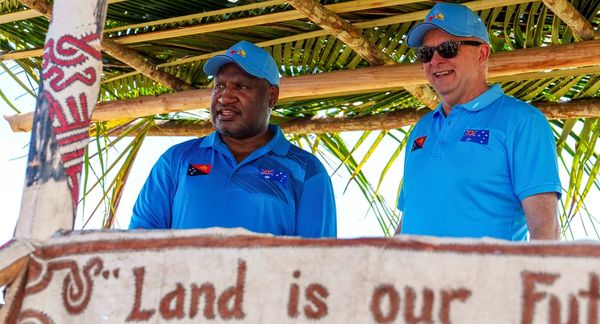Prashant Dinkar left his freestanding home in Killara, on Sydney's upper north shore five years ago.
He couldn't stand the quiet.
Now, he lives in a high-rise apartment in the heart of Parramatta.
His unit, on the 12th floor of the 28-storey tower, is nine years old, and has modern conveniences like air conditioning and security features.
He is one of about half a million Australians who now live in high-rise apartments, the latest census has shown.
The data, released yesterday by the Australian Bureau of Statistics (ABS), showed there were more than 368,000 high-rise residential apartments — in towers with nine or more storeys — in Australia.
The 2021 census for the first time counted the number of storeys in flat and apartment blocks.
Sydney leads the nation in high-density apartment living, housing nearly half of Australia's high-rise population.
About 45 per cent (247,506) of the people who live in high-rise flats reside in Greater Sydney, where there are nearly 120,000 apartments, or 32 per cent of the national total.
Mr Dinkar enjoys the convenience and scenic views of his high-rise apartment.
"It's very convenient. Name one single service you'll ever need, [and] it's in walking distance," he says.
The City of Sydney topped the high-rise apartment list, with more than 35,000 residences, followed by the Parramatta local government area, where more than 30,000 people live in high rises.
More NSW residents live in flats and apartments compared with the rest of Australia.
One in five NSW homes are now apartments, an increase of about 2 per cent since the last census, with a corresponding drop in separate and semi-detached homes.
A higher proportion of NSW residents live in flats and apartments compared to Victoria and Queensland.
There were 310,000 more homes in NSW in 2021 compared with 2016.
Nicole Gurran, an urban and regional planning expert from the University of Sydney, said policy over the past 30 years — and particularly the last decade — had driven high-density housing.
"We've actually run counter to sort of the rhetoric that we hear a lot, which is that the planning system needs to allow more high-rise apartments and high-density housing," she said.
She said it was assumed high-density housing provided more affordable housing options.
"Now, that certainly has not proved to be the case," she said.
"In Sydney at least, it is still the case of high purchase prices and high rents, and that simply reflects the fact that it is accessible to transport services."
She said good planning of high-density housing was needed to achieve good quality apartment design and neighbourhoods.
"There is this idea that you might rent an apartment and that you buy a house. That's certainly not the case and doesn't need to be the case," she said.
The census showed that of the 9.2 million private homes in Australia, 31 per cent were owned outright, 35 per cent were mortgaged and 31 per cent were rented.
In Mr Dinkar's view, high-rise living was best suited to people aged 20 to 40.
"My plan is maybe, two years down the line, I will move back to the suburbs," he said.
"And the only reason is for my pup. I want him to have a yard and that's the only reason."







